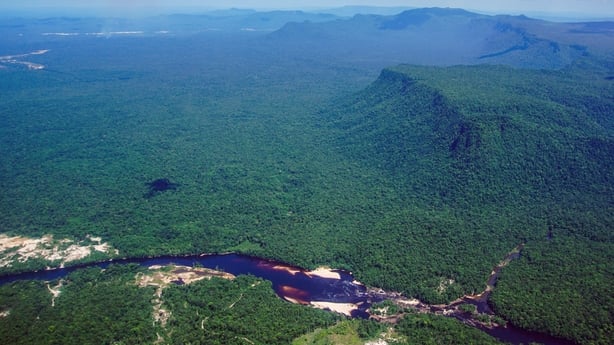A new species of moth has been discovered inside a home in Wales, thousands of kilometres from its native habitat in South America.
It is believed two clearwing moths accidentally hitched a ride when they were still larvae inside a photographer's boot bag, travelling over 7000km from a tropical jungle in Guyana before ending up in Wales.
The creatures were spotted three months later on a windowsill on a cold February afternoon by 22-year-old ecologist Daisy Cadet and her mother Ashleigh, a professional photographer, in what scientists have described as an "improbable event" that "defies rational explanation".
Ms Cadet said: "When I first saw them, I knew they were clearwings and assumed it was a UK species like the six-banded clearwing.
"For me, finding a new moth was exciting enough but at this point, I had no idea it was so unusual."
To find out more about the strange moths, Ms Cadet decided to post photos on Instagram stories when a follower got in touch to say it did not look like a known UK species.

The images were then shared widely before eventually reaching the British Natural History Museum's moth experts Mark Sterling and David Lees.
Through DNA analysis, the scientists confirmed the moths were not only a non-UK species, they were also previously unknown to science.
This prompted Ms Cadet to look inside mother's boot bag, which her mother took with her during her photography trip to Guyana.
The pair found two delicate cocoon remains that were still intact, buried in the mud from the boots she had worn on the trip.
The specimen, which is about 18mm in length, has been named Carmenta brachyclados.
C. brachyclados' wings are transparent, with black veins and black tips and the upper side of its body has iridescent blue stripes edged with yellow ones while the underside is a bright sulphurous yellow, the researchers said.
A small piece of woody vegetation, with what looked like holes made by the moths when they were caterpillars, was also found inside the bag.

Researchers believe that this plant fragment may have been a seed pod from a large tree species known as Mora excelsa, which grows in the jungles of Central and South America.
It is thought this seed pod would have protected the larvae against being preyed on or damaged during travel.
The humidity and warmer temperature in the boot bag may have helped the tropical larvae survive and grow into moths during the harsh winter, the experts said.
Mr Sterling, a scientific associate at the Natural History Museum, said: "Clearwing moths are notoriously difficult to find, even by professional entomologists.
"They are even more difficult to rear from larvae or pupae, which usually dry out or go mouldy within a few days of collection."
Mr Sterling said the chances of two clearwing moths from tropical jungles of South America "successfully emerging in South Wales, over three months after they arrived, in cold Welsh winter, and being preserved in good condition, is extraordinary".
Mr Sterling said: "The improbability of this event defies rational explanation."

